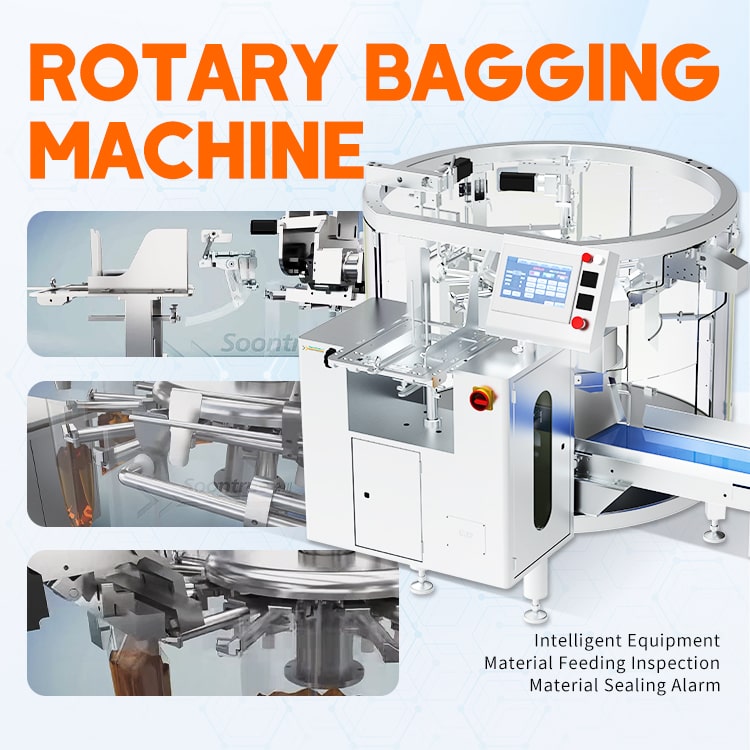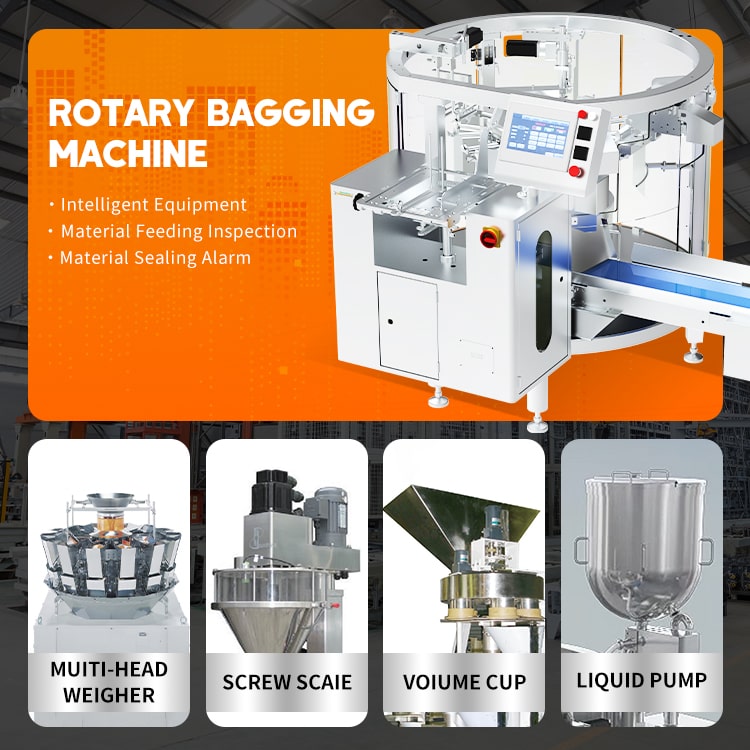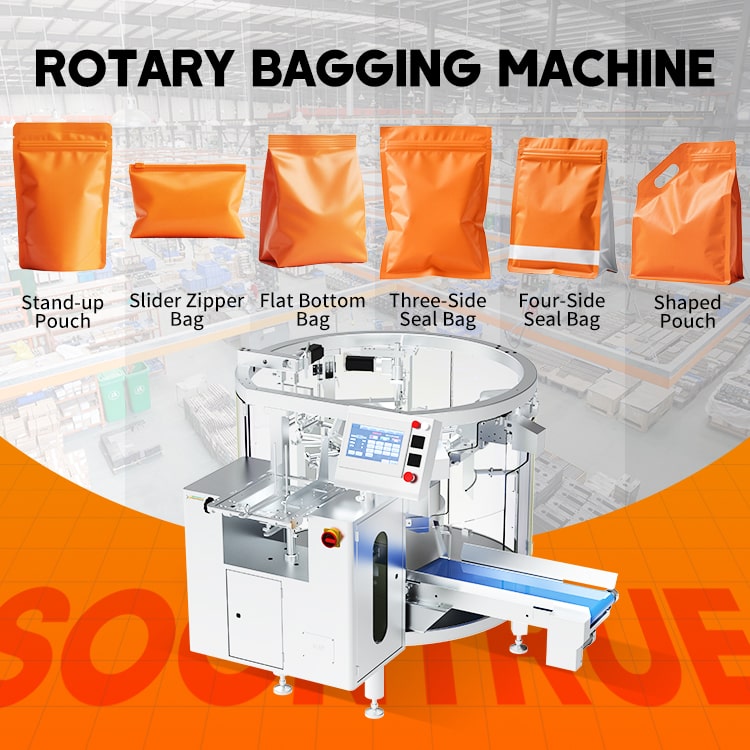Premade Pouch Packing Machines: From Principles and Pouch Types to Industry Applications
Packaging Knowledge Hub

If you're seeking packaging automation solutions, please contact us, and we'll be delighted to offer you the most tailored solution.
In today's dynamic consumer market, product packaging transcends mere protection; it is a vital extension of brand identity and a cornerstone of the consumer experience. As automation advances and consumer demand for convenient, aesthetically pleasing products grows, modern packaging requirements are rapidly escalating. In this evolving landscape, the premade pouch packing machine has emerged as a crucial innovation, empowering diverse industries to significantly enhance packaging efficiency and product appeal. By automating the precise processes of pouch picking, opening, filling, and sealing, these machines dramatically reduce labor dependency, boost production output, and ensure consistent packaging quality and product attractiveness. This article will provide an in-depth analysis of premade pouch packing machines, covering their ingenious working principles, the diverse range of pouch types they handle, and their extensive applications across various industries.
Part One: In-depth Analysis of Premade Pouch Packing Machines
1.1 Working Principle of Premade Pouch Packing Machines
At its core, a premade pouch packing machine operates on a precise and automated sequence, ensuring efficient and consistent output. The fundamental workflow can be summarized in these key stages:
- Pouch Pick-up: The machine accurately picks individual premade pouches from a magazine or feeder using suction cups or robotic arms.
- Pouch Opening: The picked pouch is then transferred to an opening station where suction cups or gripping arms fully open the pouch mouth, preparing it for subsequent filling.
- Dosing/Filling: Depending on the material and packaging requirements, a suitable dosing system (e.g., multi-head weigher, auger filler, liquid pump) precisely measures and prepares the predetermined amount of product.
- Product Filling: The precisely dosed product is accurately dispensed into the opened pouch.
- Pouch Sealing: After filling, the pouch moves to the sealing station, where the pouch mouth is securely sealed using methods like heat sealing or ultrasonic sealing, ensuring product integrity and shelf life.
- Product Output: The sealed and completed pouches are then neatly discharged from the machine, ready for downstream processes such like conveying, cartooning or palletizing.
Compared to traditional manual or semi-automatic packaging methods, premade pouch packing machines offer a significant leap in automation, dramatically improving production efficiency and meeting the demands of high-volume, high-standard packaging operations.

1.2 Main Component Parts of Premade Pouch Packing Machines
An efficient and stable premade pouch packaing machine is a marvel of engineering, comprising several core components that work in harmony:
- Pouch Feeding/Picking Mechanism: Responsible for accurately grabbing and feeding premade pouches, typically utilizing suction cups or robotic arms to ensure precise delivery to the workstation.
- Pouch Opening/Supporting Mechanism: Crucial for ensuring the pouch mouth is fully opened, preventing spillage during filling and maintaining pouch integrity.
- Dosing/Filling System: This is a critical selection based on the material's characteristics:
- Multi-head Weigher: Ideal for granular, block, or irregularly shaped solid materials, providing high-precision weighing and dosing.
- Auger Filler: Best suited for powder materials, controlling product volume through the rotation of a screw.
- Liquid Pump Filler: Used for liquid and paste products, ensuring accurate volume dispensing.
- Other options include volumetric cup fillers (for small granules) and piston pumps.

- Sealing Mechanism: Ensures both airtightness and aesthetic appeal of the packaging:
- Heat Sealing: The most common method, using heat and pressure to fuse the packaging material.
- Ultrasonic Sealing: Employed for certain delicate materials or those sensitive to heat, achieving sealing through high-frequency vibrations.
- Control System: Typically features a PLC (Programmable Logic Controller) and a touchscreen interface, enabling automated control, parameter settings, fault diagnosis, and production data monitoring.
- Auxiliary Function Modules: These enhance the added value and practicality of the packaging, including date printing (production, expiration dates), embossing (for texture or anti-counterfeiting), and easy-tear notches (for consumer convenience).
1.3 Core Advantages of Premade Pouch Packing Machines
The widespread adoption of premade pouch packing machines is a testament to their significant advantages:
- High Automation and Efficiency: They drastically reduce reliance on manual labor, significantly boosting production line output and lowering labor costs.
- Stable and Reliable Packaging Quality: The machines operate with high precision, ensuring consistent appearance, perfect sealing, and product integrity for every pouch, thereby elevating product quality.
- Excellent Packaging Presentation: Compatible with a variety of exquisite premade pouches, they effectively enhance product attractiveness on shelves and bolster brand competitiveness.
- Flexible Adaptation to Various Pouch Types and Products: A single machine can often accommodate multiple sizes and shapes of premade pouches and, by changing the dosing device, can adapt to different materials. This versatility offers a multi-purpose solution, reducing investment risks for businesses.
- Reduced Packaging Material Waste: Precise dosing and sealing control effectively minimize material loss, leading to reduced production costs.
Part Two: Detailed Explanation of Pouch Types and Features
The versatility of premade pouch packing machines lies in their ability to handle a wide array of pouch shapes and functionalities. Understanding the characteristics and applications of each pouch type is crucial for selecting the optimal packaging solution, often enhanced by high-resolution imagery for multimodal optimization.
2.1 Stand-up Pouches
- Features: Characterized by a special bottom support structure that allows them to stand upright once filled.
- Advantages: Provide excellent shelf presentation, effectively drawing consumer attention; easy for consumers to pick up and store, enhancing convenience.
- Common Applications: Snack foods (chips, puffed snacks), pet food, liquid detergents, fruit juices, yogurt, sauces, etc..
2.2 Zipper Pouches
- Features: Incorporate a re-sealable zipper mechanism at the pouch opening.
- Advantages: Allow consumers to open and re-close the pouch multiple times, effectively extending product shelf life and maintaining freshness and flavor, particularly for products consumed incrementally.
- Common Applications: Coffee beans, tea, dried fruits, nuts, snacks, frozen foods, grains, seasonings, etc..
2.3 Flat Bottom Pouches / Block Bottom Bags
- Features: Possess a flat and square bottom, giving the pouch a robust, box-like appearance.
- Advantages: Offer large capacity, superior standing stability, and a premium aesthetic; ideal for heavier or larger-sized products, providing enhanced packaging protection.
- Common Applications: Bulk coffee beans, high-end tea, grains, pet food, flour, baking mixes, etc..
2.4 Three-Side Seal Pouches
- Features: Sealed on three edges, with one end left open for product filling and final sealing.
- Advantages: Simple structure, relatively lower production cost, and wide applicability, especially for small-format packaging.
- Common Applications: Face masks, small single-serving snacks, pharmaceutical granules, wet wipes, seasoning packets, etc..
2.5 Four-Side Seal Pouches
- Features: Sealed on all four edges, commonly used for individual small sachets or multiple connected sachets (strip packs).
- Advantages: Excellent sealing properties, providing superior moisture, dust, and light protection; offers a flat and neat appearance.
- Common Applications: Pharmaceutical powders, instant coffee, spice powders, candies, single-use sample packets, etc..
2.6 Shaped Pouches
- Features: Custom-designed pouches with non-standard shapes, tailored to product characteristics or brand identity.
- Advantages: Highly visually appealing, quickly capturing consumer attention; reinforces brand image and enhances product recognition.
- Common Applications: Children's food (jellies, juices, puddings), uniquely shaped candies, shampoo, skincare samples, etc..

Part Three: In-depth Exploration of Industry Applications
The exceptional performance and flexibility of premade pouch packing machines enable them to play a pivotal role across numerous industries, fulfilling diverse packaging needs.
3.1 High-End Food Industry
In the high-end food sector, premade pouch packing machines are an ideal solution for enhancing product value and consumer experience.
- Applications: Nuts and roasted seeds, baked goods (biscuits, pastries), snack foods (puffed snacks, candies), freeze-dried foods (freeze-dried fruits, vegetable crisps).
- Advantages: The machines can precisely fill fragile or irregularly shaped food items, and when combined with premium pouch types like stand-up pouches and zipper pouches, they elevate packaging sophistication and shelf appeal. Zipper pouches, in particular, extend product shelf life and maintain freshness, significantly improving consumer convenience.
3.2 Liquid Product Industry
Packaging liquid products demands stringent requirements for sealing and convenience, and premade pouch packaging machines offer perfect solutions.
- Applications: Fruit juices, dairy products, condiments (soy sauce, vinegar, edible oil), household liquid products (laundry detergent, fabric softener, shampoo), and liquid pharmaceuticals (oral solutions).
- Advantages: Often utilize stand-up pouches with spouts or caps, facilitating easy pouring and multiple uses for consumers. Pouch packaging, compared to bottles, can also reduce transportation costs and storage space, while minimizing plastic consumption.
3.3 Powder Product Industry
The core of powder product packaging lies in precise dosing and protection against moisture and oxidation.
- Applications: Milk powder, protein powder, coffee powder, cocoa powder, flour, seasoning powders, washing powder, desiccants.
- Advantages: When paired with auger filling systems, they achieve high-precision filling, ensuring accurate net weight. Furthermore, by using high-barrier composite pouch materials and robust sealing, they effectively prevent moisture absorption, caking, or oxidation, guaranteeing product quality and stability.
3.4 Other Key Industry Applications
- Pharmaceutical Industry: Granulated medicines, capsules, medical devices (e.g., sterile wipes, gauze). Emphasizes high hygiene standards (stainless steel construction, GMP certification), precise sealing (to prevent cross-contamination), and batch traceability (date/batch number printing).
- Agricultural Industry: Seeds, fertilizers, pesticide granules. Focuses on moisture protection, pest prevention, and accurate dosing to ensure the effectiveness and safety of agricultural inputs.
- Pet Food Industry: Dry pet food, wet pet food, treats. Often requires large capacity packaging and re-sealable features (zipper pouches) to maintain freshness and extend shelf life.
- Other Industries: Chemical products (pigments, additives), small toys, hardware components, electronic parts, etc., where the flexible packaging formats can meet diverse requirements.
Part Four: Selection and Maintenance Guide for Premade Pouch Packing Machines
Investing in a premade pouch packing machine is a significant decision that requires careful consideration of various factors:
- Capacity Requirements: Determine your desired production volume and anticipated growth to select a machine with appropriate speed and output.
- Material Characteristics: The form (powder, granule, liquid, paste), viscosity, flowability, and corrosiveness of your product will influence the choice of the filling system.
- Pouch Type Requirements: Identify the specific pouch types (stand-up, zipper, flat bottom, etc.) and their size range you plan to use to ensure machine compatibility.
- Budget: Establish a realistic budget range and strive for a balance between performance, brand reputation, and service.
- Manufacturer Reputation and After-Sales Service: Choosing a supplier with a strong reputation, robust technical capabilities, and prompt, effective after-sales support and spare parts availability is paramount.
- Automation Level: Consider whether full integration into an automated production line is needed and the machine's level of intelligent control.
Routine maintenance and proper upkeep are crucial for ensuring the long-term stable operation and extending the lifespan of your premade pouch packing machine. This includes regular cleaning, lubrication, inspecting wear parts, and calibrating the dosing system. Adhering strictly to the manufacturer's operation and maintenance manuals will maximize equipment efficiency, reduce breakdowns, and ensure smooth production.
Frequently Asked Questions (FAQs) about Premade Pouch Packing Machines
Q1: What is a Premade Pouch Packaging Machine, and how does it benefit my business?
A1: A Premade Pouch Packing Machine is an automated system designed to fill and seal pre-formed pouches. It operates by picking up, opening, filling, and sealing these pouches with various products. Its core benefits include high automation, increased efficiency, consistent packaging quality, enhanced product presentation, adaptability to diverse pouch types, and reduced material waste, significantly boosting your production output and brand image.
Q2: What types of products can Premade Pouch Packaging Machines handle?
A2: These machines are incredibly versatile. They can handle a wide range of products including solids (like snacks, nuts, pet food), liquids (juices, sauces, detergents), powders (milk powder, coffee powder, spices), and granules (grains, cereals). The specific filling system (e.g., multi-head weigher, auger filler, liquid pump) is selected based on your product's characteristics.
Q3: What are the most common pouch types used with these machines?
A3: Premade Pouch Packing Machines are compatible with various pre-formed pouch types. The most common include Stand-up Pouches (for shelf appeal and convenience), Zipper Pouches (for re-sealability and freshness), Flat Bottom Pouches (for large capacity and premium look), Three-Side Seal Pouches (cost-effective for single servings), Four-Side Seal Pouches (excellent sealing for small sachets), and custom Shaped Pouches (for unique branding).
Q4: How do these machines improve packaging quality and product shelf life?
A4: Premade Pouch Packing Machines ensure consistent and aesthetically pleasing seals (via heat or ultrasonic sealing), which are crucial for product integrity. For products requiring extended freshness, the use of zipper pouches allows consumers to re-seal the package, and the machine's precise sealing prevents air and moisture ingress, effectively extending the product's shelf life and maintaining its quality.
Q5: What should I consider when choosing a Premade Pouch Packing Machine for my production line?
A5: Key factors to consider when selecting a machine include your required production capacity, the specific characteristics of your product material, the types and sizes of pouches you intend to use, your budget, the reputation and technical expertise of the manufacturer, and the availability of reliable after-sales support and spare parts. Choosing the right machine ensures optimal performance and a strong return on investment.
